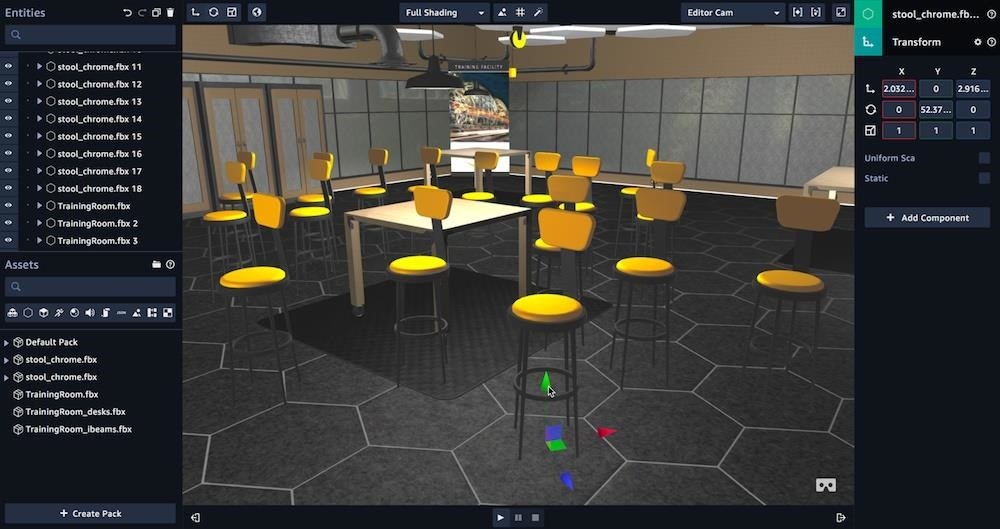Amazon Web Services (AWS) opened its re:INVENT developers expo with a bang by launching Amazon Sumerian, a new tool that could become the dominant platform for building cross-platform augmented and virtual reality applications.
Available now as a preview, Amazon Sumerian is a web-based editor that promises to give even novice programmers the ability to build AR, VR, and 3D applications for mobile devices, headsets, and even web browsers. Sumerian apps support WebGL and WebVR, which enables it to run in any web browser, as well as ARKit for iOS apps, with ARCore support forthcoming.

"Customers across industries see the potential of VR and AR technologies for a wide range of uses — from educating and training employees to creating new customer experiences. But, customers are daunted and overwhelmed by the up-front investment in specialized skills and tools required to even get started building a VR or AR application," said Marco Argenti, vice president of technology at AWS, in a news release. "With Amazon Sumerian, it is now possible for any developer to create a realistic, interactive VR or AR application in a few hours."
Amazon Sumerian takes the coding out of creating AR and VR apps. It offers users a drag-and-drop interface to place 3D objects and characters into a scene, with the tool offering pre-built objects and templates as well as the option to import 3D assets. Users can also give birth to animated 3D characters that can narrate scripts or interact with audiences using built-in AWS tools for speech recognition and natural-language understanding. A visual scripting tool enables users to control how the characters and objects react to commands. In addition, users can embed location services from Mapbox into their apps.

"We now bring Mapbox location services to Amazon Sumerian, enabling users to integrate 3D maps and surfaces into their AR and VR applications and bring location-based experiences to life," said Alex Barth, VP of business development for Mapbox. "For instance, we integrated Mapbox's points of interest and global terrain maps with Amazon Sumerian so data is delivered and rendered in real-time."
The tool is free, but Amazon charges users for 3D asset storage and viewing traffic data. Scenes cost $0.06 per GB per month to store and users can import FBX and OBJ formats at present, but that pool will expand to Unity projects soon. Users are charged $0.38 per gigabyte per month multiplied by project size and then by the number of views of a scene in a month. Considering the size of most 3D models, some Sumerian users could rack up fee charges quickly.


While Apple, Google, Facebook, and Snapchat are jockeying for position to provide the platforms for rendering AR experiences, Amazon is aiming to muscle in on Unity's role as the default platform for synthesizing the AR content that goes into those experiences. Based on the information released today, it appears that AWS envisions its tool as being used by businesses to build things like field service productivity and training simulation apps (for employees), virtual product try-on apps, virtual concierge experiences for interacting with customers, and even as an upgrade to PowerPoint for internal presentations.
Just like its parent company, which has upended the retail industry, AWS is the 800 pound gorilla in the hosting and cloud computing world. In the coming months, an offering like Amazon Sumerian may have a similar impact on the AR software landscape.
Just updated your iPhone? You'll find new features for Podcasts, News, Books, and TV, as well as important security improvements and fresh wallpapers. Find out what's new and changed on your iPhone with the iOS 17.5 update.























Be the First to Comment
Share Your Thoughts